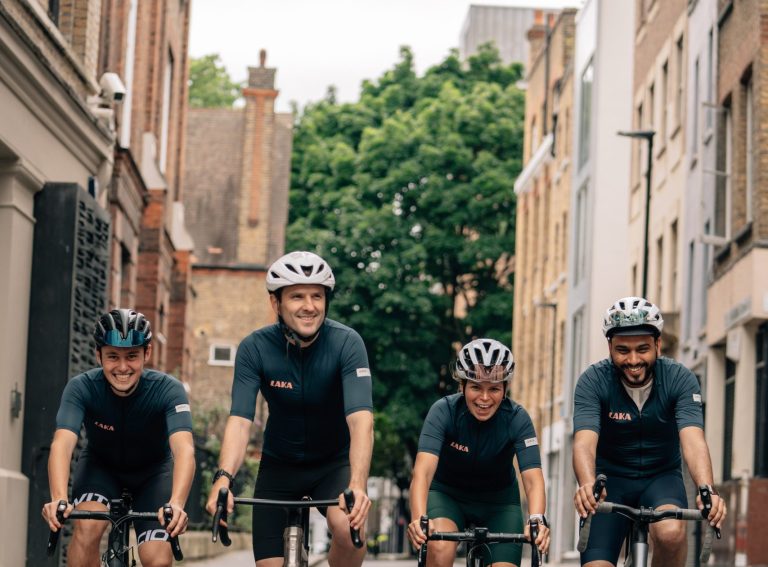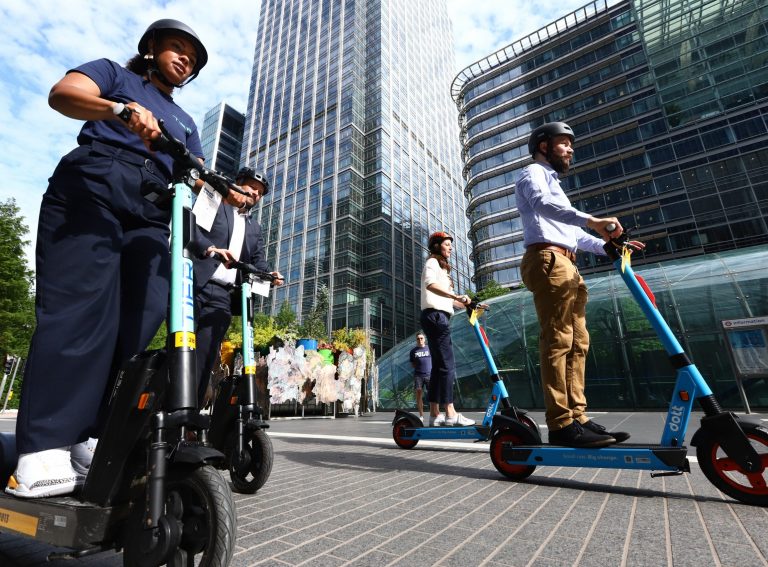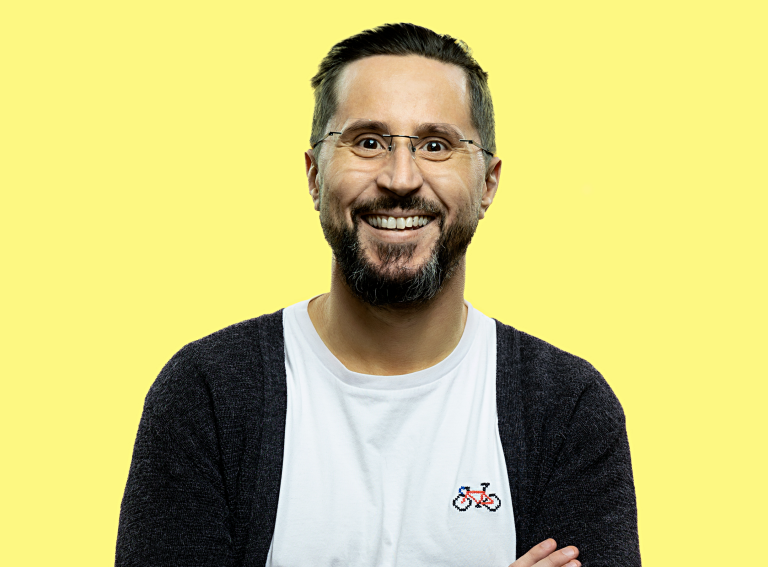By Zag industry expert Lars Christian Grødem-Olsen, an Advisor for Movability on new mobility and former Country Manager at Tier.
Norwegian micromobility operator Ryde may operate in fewer markets than others, but where you see them, you’re usually looking at the market leader.
“Smart growth” is Ryde’s motto and CEO Tobias Balchen knows which expansion shots to call, having been profitable since day one.
Zag Daily: What is Ryde’s origin story?
Tobias: “One of the co-founders Espen was on the national table tennis team in Norway. He discovered electric scooters while living in China and realised how well they worked for beating traffic. He brought some back, and everyone wanted one. By the time he moved back to Norway, Espen and Johan had founded Bydue to sell electric scooters privately. They then realised that renting made more sense if they wanted to scale and launched Ryde in Oslo in 2019.”
Zag: How did that work out?
Tobias: “All the other big players came in around the same time. Ryde didn’t have enough scooters to compete, especially in an unregulated market, so we moved the launch to Trondheim. There was a subsequent lawsuit with the Trondheim municipality, but Ryde persevered and also launched successfully in Bergen and Stavanger. When we first placed scooters in Trondheim, people ran after the van to get one. We couldn’t even place them before they disappeared. It was a fantastic market reception.”
Zag: Could you talk about the lawsuit?
Tobias: “We faced legal challenges in Trondheim and Bergen. We made it very clear that we had the law on our side, and the municipality couldn’t use ownership rights to regulate the service we offered. We won those cases all the way to the Supreme Court. Had the outcome been different, we might have faced existential challenges.”
Zag: It seems Ryde was forced into the “bad guy” role and now Ryde has become more like “mom’s favourite child.”
Tobias: “It’s interesting to observe the shift in perception. Some of our competitors might have accepted 200 scooters in Trondheim two years ago when venture funding provided a buffer for losses. Now they are so desperate to make money, they become aggressively opposed to any kind of regulatory interference. Operators have long had a close cooperation with one Finnish city. The city recently asked an operator not to launch their service until after the winter season. This operator chose to end their partnership instead and launched anyway. Ryde has always been positive about sensible regulation as long as it doesn’t prevent us from offering a good service.”
Zag: How has Ryde grown to where it is today?
Tobias: “We’ve pursued what we call “smart growth,” investing a lot in fewer cities. We would rather have a larger fleet and build a winning position than chase the next city. TIER is in more than 300 cities, Voi around 100 cities. We might have 25, but all with a leading market position. We are picky about the cities we expand into. We spend more time building a local presence, offering a very good service, and doing everything in-house. With in-house maintenance, our scooters are in better condition on average than our competitors, a fact that becomes more and more apparent as the scooters age. I don’t think you win the market on day one by offering the best service, but you do over time.”
Zag: I also wonder if it has to do with price and density because you’ve had quite competitive prices, but have avoided losing money.
Tobias: “We’ve been competitive without resorting to drastic price drops. We can’t compete on density in Trondheim where there are already 1067 scooters on the road, but we can in Bergen because we have more than competitors. Since Bolt withdrew last year, there’s only Voi left. Our focus is streamlining our operations and systems. It’s the efficiency that determines how competitive we can go on price.”
Zag: How have you managed to retain customers even as other operators have subsidised growth with lower prices?
Tobias: “Our prices are competitive because of how efficient our operation is. We also offer a better service with a larger geofence and better maintained scooters, so people are less willing to switch. We have seen instances where competitors have launched aggressive price campaigns and only gained a few percentage points of market share. But as soon as the campaign ends, the customers return to Ryde.”
Zag: You left Oslo for Trondheim, but came back in 2021. What happened?
Tobias: “We always planned to come back to Oslo, but you needed enough bikes. Equip Capital came in, and we had the financial muscle to buy a large fleet ourselves. We launched in May of 2021 and did very well. It was regulated in September and became a quota system. Everyone who applied got a quota of 8000 divided by the number of applicants. The quota was for 667 vehicles, which we had. Other companies that applied didn’t plan to operate it themselves, so we operated on their behalf. In total, there were three licenses, so we had four licenses. It lasted until we lost the tender competition and did not continue from April 1, 2022. However in April 2023, we were ranked best in the tender, relaunched and very quickly took more than 50% of market share.”
Zag: You have achieved what all operators dream of: profitable growth. I imagine there are some operators who are shaking in their boots at the thought of you entering new markets. Will you stay in the Nordics or are you looking elsewhere?
Tobias: “Expansion is high on the list for next year. We have grown slower than our competitors, but the growth has been fantastic in percentage terms. We have a strong backbone to grow on our own, and positive cash flow to invest in new scooters. We aren’t worried about what our competitors think. We are focused on our business, and what markets we can succeed in with a reasonable number of scooters and that don’t have too many unnecessary regulations.”
Zag: Are there regulations you find particularly counterproductive?
Tobias: “In Norway, the state has taken some control over what you can and cannot regulate, which helps. We do see a correlation between the size of the municipality and regulation that is more out there. For example, a limit of 75 scooters to be shared among three operators with high fees. If the market is so small that it can’t handle more than 75, then you don’t need regulation in the first place.
“There’s also a bit of a double standard. Some regulations ban using scooters at night to prevent people driving them while intoxicated, which is already prohibited by law. You don’t see the same rules being proposed for cars. Banning a service on the assumption that the public in general breaks the law does not ring right for us.”
Zag: What about insurance regulations?
Tobias: “It’s good to have insurance because accidents can happen, but the current policy in Norway is overkill. Under car liability laws, you have to insure for unlimited damage potential and 100 million for third-party property damage. What is the probability that you can destroy something for 100 million kroner on a scooter? You would have to crash into a truck carrying ten Lamborghinis, and burn it all to the ground. Fortunately, there have been very few accidents where the insurance would have helped. Mainly, the serious accidents and fatalities have been on private scooters, which often go faster than what is allowed.
“Insurance companies may eventually realise that the most expensive outcomes don’t happen, and competition will balance out pricing. The rapid introduction of insurance requirements also caught some off guard, and there wasn’t sufficient time to adapt. Several insurance companies even refused to bid for the mandatory insurance they are obliged to offer because they wanted nothing to do with scooters, which I find weak from serious, established companies.”
Zag: Should e-scooter operators pay a municipal fee?
Tobias: “We already pay a fee to be allowed to park on the street. That’s like asking if food delivery company Oda should pay rent for using public roads. The bigger issue is that municipalities use enormous amounts of money to subsidize public transport, while we have to pay to offer an unsubsidized, emissions-free alternative that reduces car traffic and helps the municipality achieve its goal. The cost for municipal operation of the service also varies. Some operate at a very high cost and others very cheaply. We have no control over it. We just have to pay, which is frustrating. In both Norway and Sweden operators have been pulling out of cities due to unsustainable fees.”
Zag: Where do you think micromobility regulation should go?
Tobias: “We’ve seen that some municipalities may not need formal regulation. We have a very close cooperation with large, formally unregulated Finnish cities like Tampere and Turku in Finland. I believe we should only regulate where there are problems. Bergen, for example, has capped scooter numbers in the city center, but operators can compete on equal terms outside of it. On the other hand, Oslo has a fixed cap of 8000 scooters in the city, which leads to a smaller coverage area because we cannot spread the fleet too thin and still offer a good service.”
Zag: You’ve said you want to start making users more accountable for the fines from the city. How far are you in this?
Tobias: “We’ve developed a very robust process in Oslo and Bergen that ensures fair consumer treatment. If it’s an obvious parking violation—for example, if the customer parked in the middle of the sidewalk—then we forward the fine. The customer receives a message, including the actual fine, pictures from the city officials, and their own end-ride photo so they can be sure that no one has moved the scooter. The user is able to complain to us and directly to the city environmental agency. We also cover half the fine so the user gets a fine of 450 kroner instead of 900.”
Zag: Why do you feel it necessary to cover half the fine?
Tobias: “We don’t agree you should be fined the same amount for parking a scooter 20cm from the wall as you do for parking a car incorrectly. We believe 450 kroner is sufficient as a financial incentive for customers to take parking rules seriously. We’ve already observed positive changes, especially among users who may have been less cautious before.
“It’s unfortunate we have to take this step, but necessary to improve parking opportunities so that micromobility can be better integrated into society. It’s also a competitive parameter for us in applications, because it shows we take it seriously. It also weeds out the bad parkers, which is a minority that gives a bad impression for the majority.”
Zag: What’s next?
Tobias: “We will continue to do our thing, and build brick by brick. We aim to be the leading in micromobility operator in Europe, and are already market leaders in almost all markets we compete in today. This is what it’s all about for us.”





